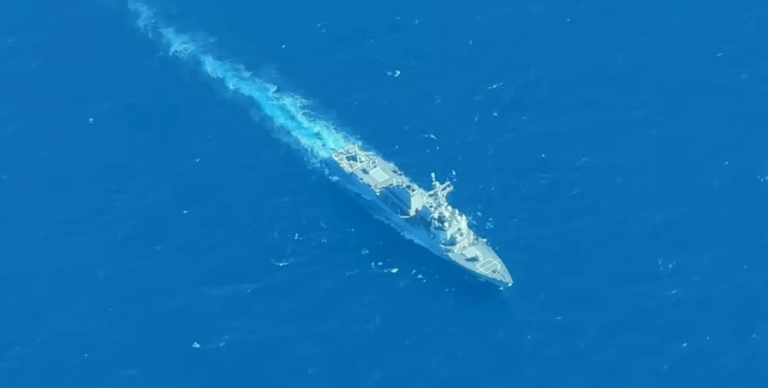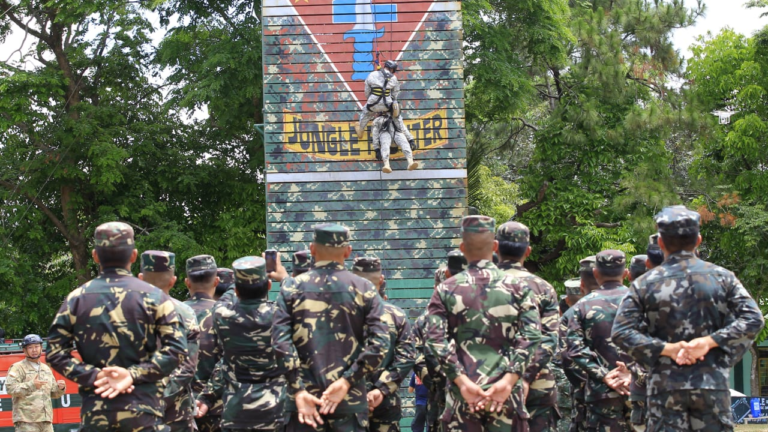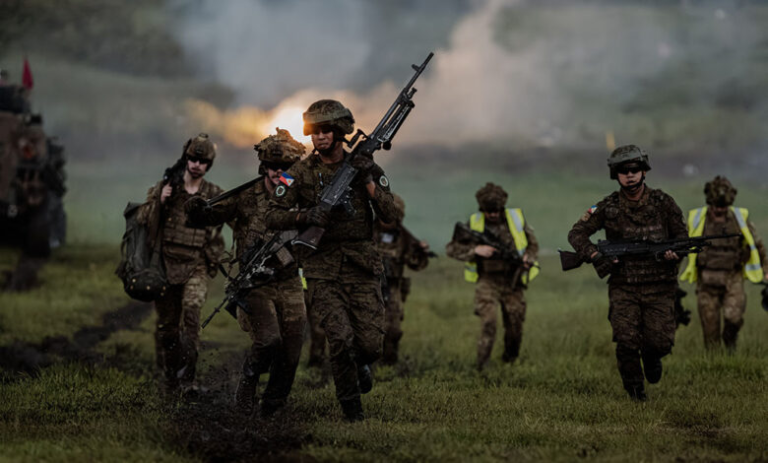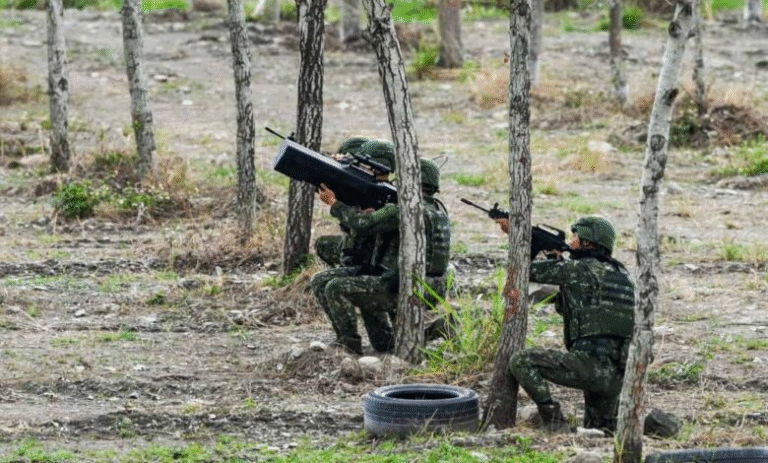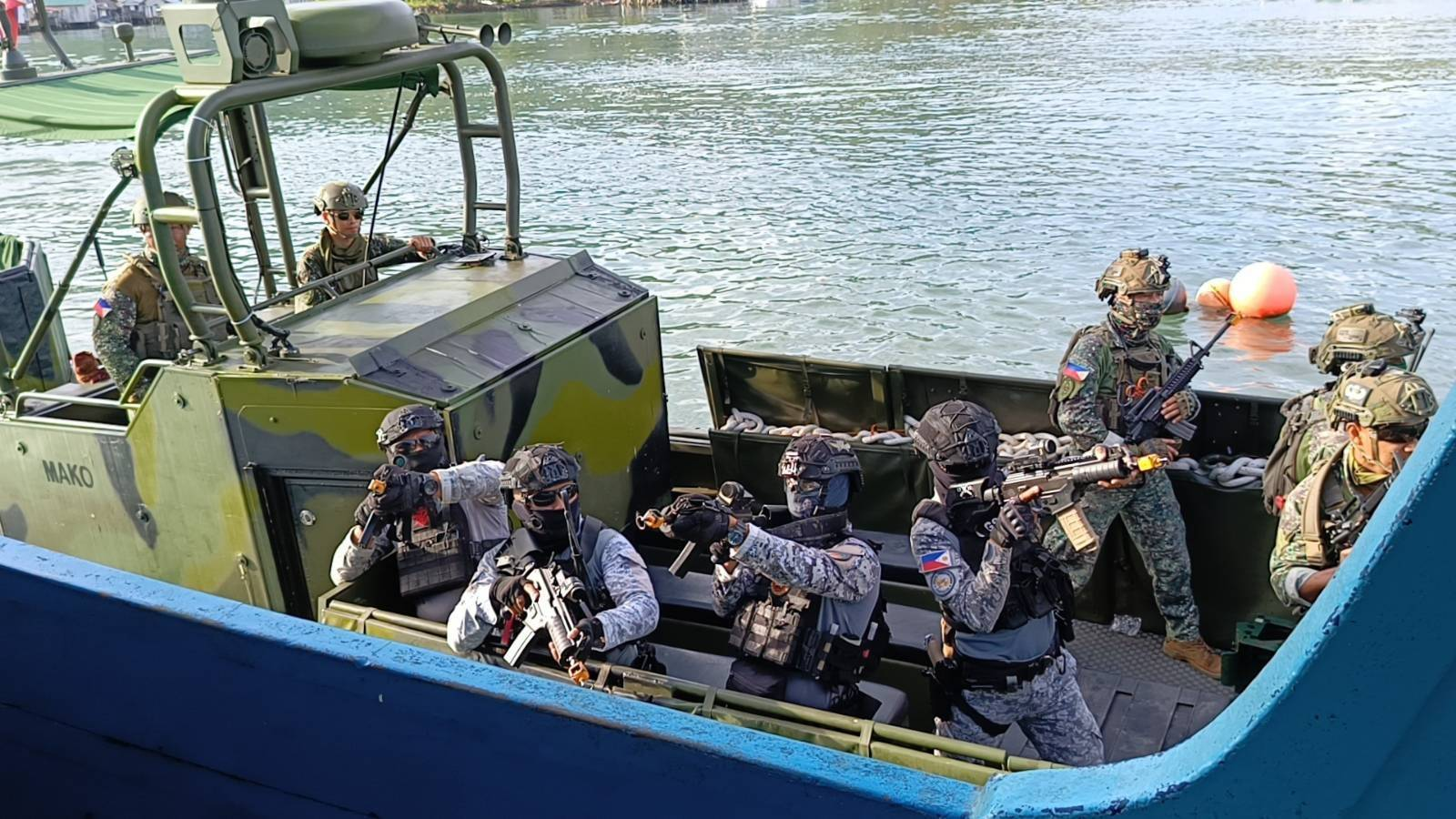
Philippine forces trained last week to defend Balabac, a strategic island in Palawan that is set to host a new military base dedicated to South China Sea operations.
Philippine Marines and Coast Guard special forces held joint maritime boarding operations in the vicinity of Balabac Island, which has been recognized as a strategic basing location by Manila amid its push to increase the country’s defensive capabilities. The quiet island is located next to a strait of the same name separating the Philippine province of Palawan from Malaysia and near several South China Sea hotspots.
According to a Philippine Coast Guard release, the boarding drill was meant to “prevent hostile forces from establishing a foothold in the vicinity” of Balabac Island. A high-altitude insertion also dropped force reconnaissance Marines onto Balabac during the exercise in what the Philippine Navy claimed was a demonstration of their ability to operate and seize objectives in a “contested littoral environment.”
The activity was one of several across the Philippines held under Marine Aviation Support Activity 2025, an annual bilateral U.S.-Philippine Marine exercise focused on enhancing aerial interoperability. Last year’s iteration saw U.S. Marine Corps F-35Bs drop precision-guided munitions on targets in the South China Sea.
The presence of the Coast Guard Special Operations group in the drill comes as both Washington and Manila seek to bolster Philippine law enforcement capabilities in more territorial defense activities. Special operations forces from the Palawan-based agency have received training from U.S. Navy SEALs. The Philippine National Police also deployed its Special Action Force during Balikatan drills and to the frontlines of the Philippine-Chinese territorial dispute in the Spratly Islands.
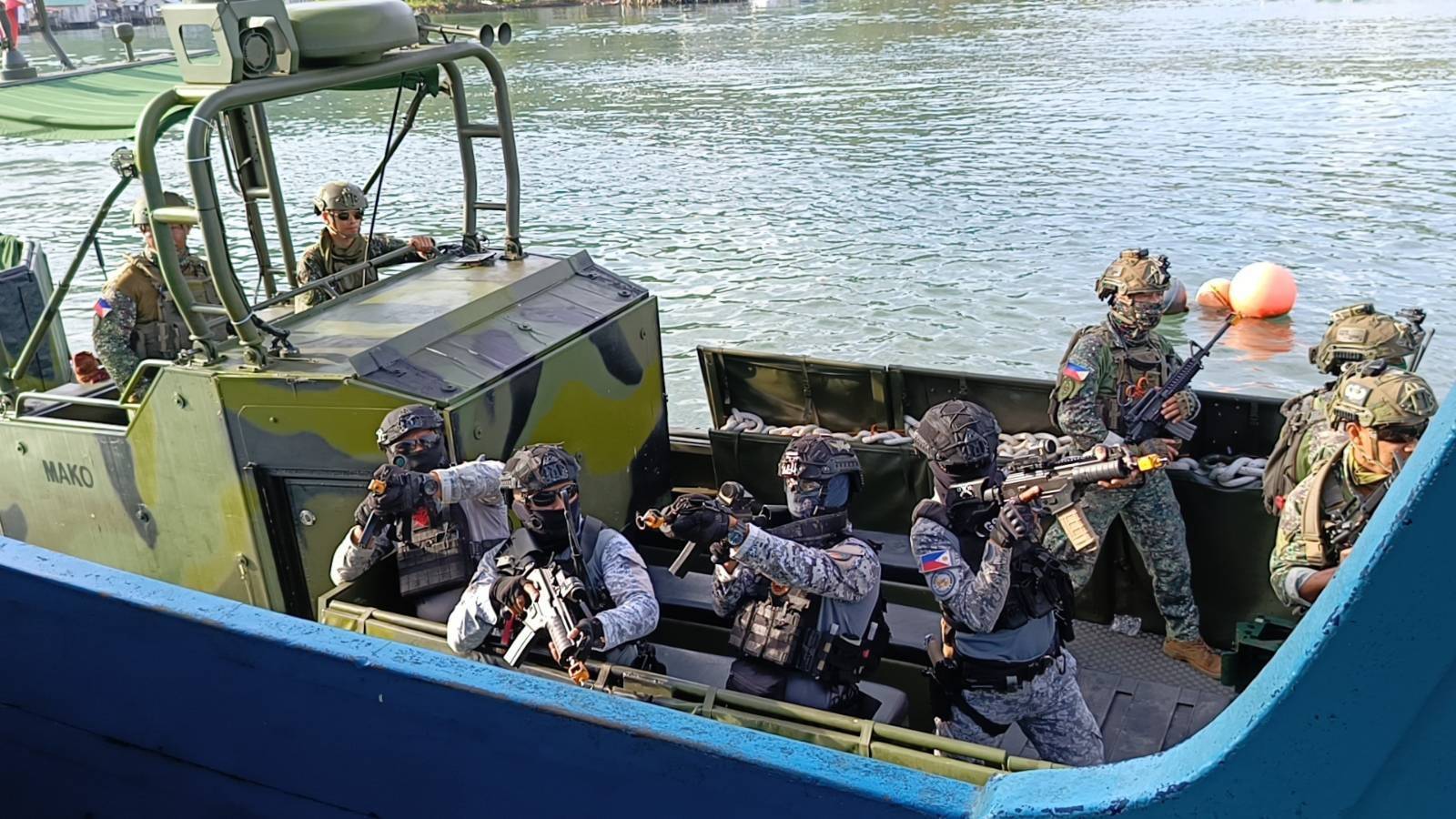
In 2023, Balabac Island was selected as one of nine sites across the Philippine archipelago to host American-funded facilities and rotationally deployed U.S. forces under the Enhanced Defense Cooperation Agreement. The move coincided with increased tensions between Manila and Beijing over maritime features in the South China Sea, including the nearby Second Thomas Shoal.
The strait, one of several going through Philippine waters, has also seen increased attention from American and Chinese forces. Washington and Beijing have utilized the strait for transiting warships, including aircraft carriers, in previous years between the first and second island chains.
Philippine policymakers have recently noted the military implications of these transits and have passed a new archipelagic sea lanes law to strengthen the country’s sovereignty. Chinese carriers, destroyers, cutters and spy ships have reportedly traversed Philippine archipelagic waters without notifying Manila.
Manila plans to construct significant naval and air base infrastructure at Balabac, including a pier capable of hosting destroyer-sized vessels and a three-kilometer-long runway. Philippine Secretary of National Defense Gibo Teodoro has noted the importance of these future facilities in maintaining Philippine presence and maritime domain awareness capabilities in the South China Sea.
Recent Philippine Senate hearings have revealed that these projects are delayed as a result of funding shortfalls.


